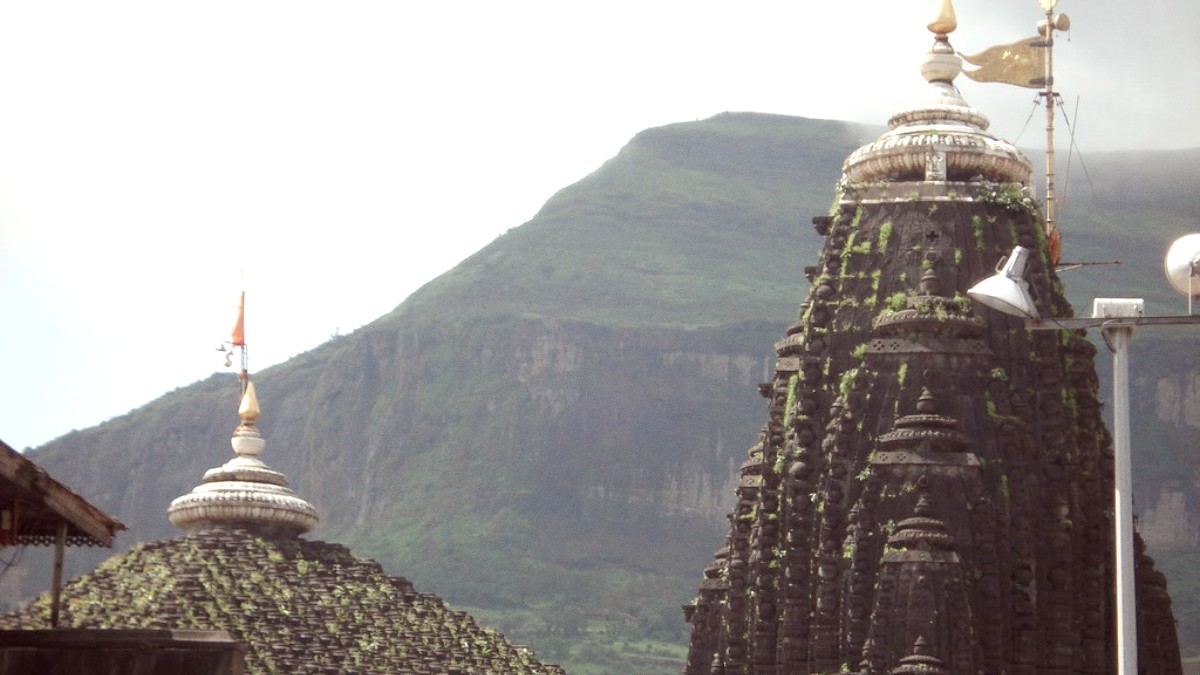
Maharashtra, India
Nashik holds several iconic landmarks, deeply historical, cultural, and spiritual.
From the revered Trimbakeshwar Shiva Temple to the modern marvel of Sula Vineyards, each site offers a glimpse into the rich heritage and present of this ancient city.
Kalaram Temple: Open daily, typically 5:00 AM - 12:00 PM and 4:00 PM - 9:00 PM. No entry fee. Modest dress. Admire intricate carvings.
Group of 24 ancient Buddhist rock-cut caves (1st century BCE to 3rd century CE). Served as monasteries and prayer halls. Feature intricate carvings, stupas, inscriptions, presenting a glimpse into early Indian rock-cut architecture. Open daily 8:00 AM - 5:30 PM. Entry fee applies. Located about 8 km south of Nashik; short paved climb needed.
Small, low cave near Kalaram Temple in Panchavati. Local belief holds this as the abduction site of Sita by Ravana. Narrow passage leads to small shrines. Very low entrance, requiring crouching/crawling. No entry fee.
Old city area, specifically Panchavati, displays traditional Maharashtrian architecture: old wadas (traditional houses), intricate wooden carvings, narrow lanes reflecting centuries of urban development.
Modern, sprawling temple complex from white Makrana marble. Features replicas of the twelve Jyotirlingas of Lord Shiva and other sacred shrines; devotees experience the essence of these pilgrimage sites in one location. Open daily, no entry fee. Dhyan Kendra and spiritual library also present.
Significant Hindu pilgrimage site (one of 51 Shakti Peethas), 60 km from Nashik. Temple perched on a hill. Devotees climb long steps or use a ropeway extending panoramic views.
Nashik's natural beauty, shaped by the Godavari River and the Western Ghats, holds serene parks, scenic viewpoints, and seasonal wonders.
Memorial to Dadasaheb Phalke ("father of Indian cinema") on city outskirts. Features beautiful, well-maintained gardens, meditation center, exhibition displaying Phalke's life and work. It presents a peaceful spot for relaxation.
Backwaters of Gangapur Dam extend scenic views, especially at sunset. Boating is open, and it remains a popular spot for picnics and enjoying the peaceful environment away from the city bustle.
A serene garden area near Panchavati, believed to be another spot where Lord Rama spent time during his exile. It displays a tranquil escape with lush greenery and a peaceful atmosphere.
The Godavari River flows through the city; Gangapur Dam creates a large reservoir. These waterways present opportunities for recreational boating and scenic spots for relaxation.
Landscape dominated by Deccan Traps, vast formations of volcanic basalt rock. These geological features evident in the flat-topped hills and plateau regions, shaping the landscape's distinct character.
No major wildlife sanctuaries directly in Nashik. Western Ghats region around Nashik supports diverse birdlife and smaller animal species, visible during treks.
Believed birthplace of Lord Hanuman. Panoramic views of surrounding plains and Western Ghats after a moderate trek. Views from the top remain especially rewarding.
Seasonal waterfall, comes alive during monsoon (July-Sept). A popular spot for a refreshing visit, with lush greenery surrounding it.
Also Ashoka Waterfall, near Igatpuri. Holds remarkable majesty during monsoon, drawing visitors for its impressive cascades and natural beauty.
Beyond well-known attractions, Nashik holds several hidden gems, presenting unique experiences, often with fewer crowds.
Nashik offers diverse settings for capturing memorable photographs, from spiritual rituals to scenic landscapes.
Capture the essence of Nashik's beauty and culture through these unique photo opportunities.
Capture the sunrise or sunset at Ramkund, with the reflection of the temples on the water, for spiritual and scenic beauty.
Panoramic views of Nashik city and the surrounding hills from the Pandavleni Caves present stunning landscape photography.
The sprawling vineyard landscapes, especially during harvest season, render unique photographic backdrops, especially at Sula Vineyards.
Discover villages surrounding Nashik, especially near vineyards or in Ghat foothills. These extend a genuine glimpse into rural Maharashtrian life, agricultural practices, and local customs.
Emerging smaller, boutique vineyards beyond established Sula and Soma present more intimate wine experiences. These often feature personalized tours and tastings, enabling visitors to discover newer labels and smaller-scale operations.
Find Wine TastingsDress modestly with shoulders and knees covered. Mobile phones and cameras generally do not enter the inner sanctum. Consider a local guide for insights.
The Panchavati area is best explored on foot to soak in the atmosphere. Visit early morning or late evening to observe daily rituals along the Godavari River.
Take time to admire the intricate carvings on the temple walls of Kalaram Temple. Combine your visit with a trip to Ramkund and Sita Gufa, as they are nearby.
Explore Nashik's museums for a dive into its history and culture.
Connect with Nashik's layered past through its archaeological and religious sites.
To avoid crowds at popular temples, visit early morning or late evening. Weekdays generally less crowded than weekends.
A weekday visit to Sula Vineyards, rather than weekend, typically brings a more relaxed experience with fewer people.
Beyond well-known attractions, Nashik holds several hidden gems, presenting unique experiences, often with fewer crowds.
Often overlooked by tourists, this memorial offers a tranquil escape and insights into Indian cinematic history.
A tranquil spot featuring a small, ancient Shiva temple and a seasonal waterfall on the Godavari River.
A lesser-known temple with unique architecture, built in 1756.
This temple showcases historical architectural brilliance.
Explore the local villages surrounding Nashik for an authentic rural experience.
These hidden gems remain away from typical tourist crowds.
Beyond established wineries, discover smaller, boutique vineyards for intimate experiences.
A unique aspect of Nashik's wine region.
Dugarwadi and Vihigaon Waterfalls display their fullest beauty during the monsoon months (July-September).
For vineyard areas and many hidden gems, private transport (taxi, rental car) typically works best for reaching city attractions.
When visiting temples or local villages, observe and respect local customs and dress codes. This includes removing shoes at some traditional venues.